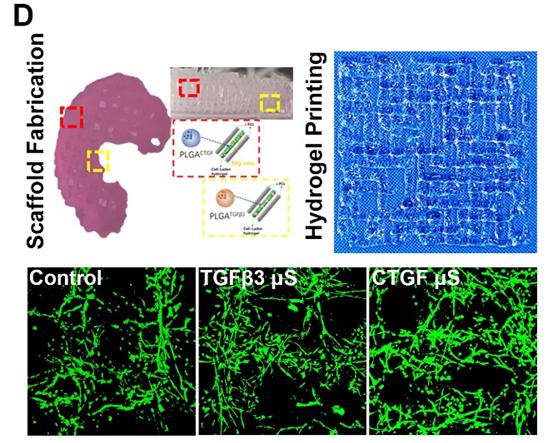13.3
Impact Factor
Theranostics 2022; 12(10):4601-4602. doi:10.7150/thno.73783 This issue Cite
Erratum
3D-bioprinting ready-to-implant anisotropic menisci recapitulate healthy meniscus phenotype and prevent secondary joint degeneration: Erratum
1. Department of Orthopaedics, The First Affiliated Hospital of Nanjing Medical University, Jiangsu, 210029, China.
2. Clinical and Translational Research Center for 3D Printing Technology, Shanghai Ninth People's Hospital, Shanghai Jiao Tong University School of Medicine, Shanghai, 200011, China.
3. Shanghai Key Laboratory of Orthopaedic Implants, Department of Orthopaedic Surgery, Shanghai Ninth People's Hospital, Shanghai Jiao Tong University School of Medicine, Shanghai, 200011, China.
4. Department of Rehabilitation Medicine, Shanghai Ninth People's Hospital, Shanghai Jiao Tong University School of Medicine, Shanghai, 200011, China.
#These authors contributed equally to the article.
Published 2022-5-28
Corrected-article in Theranostics, Volume 11, 5160
The authors regret the error in Fig. 7D of our original article. The representative image of fluorescent staining in the control group is incorrect. The correct fluorescent image has been provided in the revised Figure 7D below. We confirm that the change of this image does not affect the results and conclusion.
Fabricated TCM meniscus (top left) was incubated in vitro for 12 weeks. Addition of PLGA μS did not alter the printability of the composite hydrogel and its orderly alignment in printing (top right). Cellular interaction and viability (lower panel) was observed under microscope for different μS-conjugated hydrogel compared to that in the control group.

Author contact
![]() Corresponding author: Ye Sun, Department of Orthopaedics, The First Affiliated Hospital of Nanjing Medical University, Jiangsu, 210029, China. E-mail: sunye881005com.
Corresponding author: Ye Sun, Department of Orthopaedics, The First Affiliated Hospital of Nanjing Medical University, Jiangsu, 210029, China. E-mail: sunye881005com.
 Global reach, higher impact
Global reach, higher impact